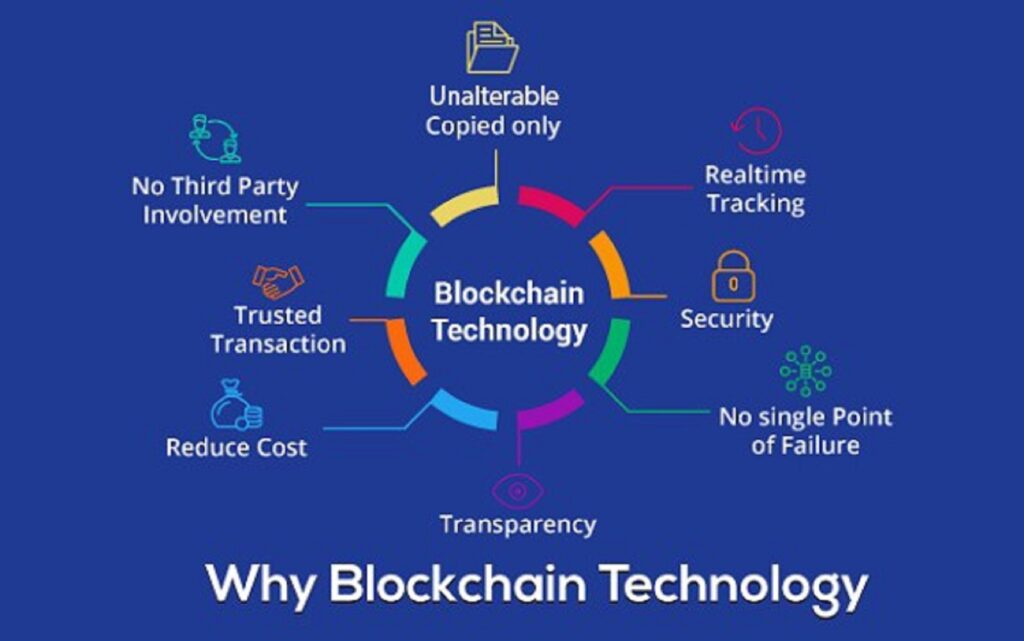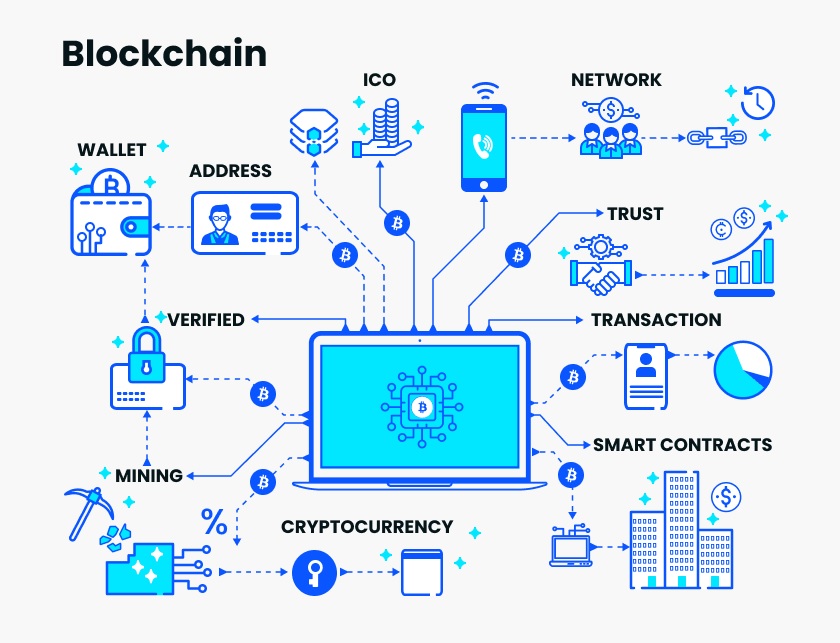
Essentially said, block chain technology is a decentralized, immutable network that tracks the origins of virtual currencies. So information on a block-chain can’t be changed by default, making it a real dark templar in sectors like transactions, surveillance, and medical. By the use of decentralization and encryption encoding, crypto currency, also known as Decentralized Ledger Technology (DLT), enables the provenance of any crypto currency unchangeable and accessible.

A Google Doc is a perfect comparison for learning Block Chain Technologies. Whenever users produce a document and exchange this with a set of individuals, rather than just being duplicated or transmitted, the material is disseminated. This provides a decentralized distribution network where everyone has the simultaneous access to that information. Nobody is blocked out because looking for adjustments from some other participant, and all alterations to the document are captured in instantaneously, keeping them entirely accessible.

It is a particularly promising and transformative innovation because that provides stability, eliminates corruption, offers provide expandable accessibility for a wide range of applications.
Who Invented Block-chain?
In 1982, cryptographer David Chaum developed the first block chain-like protocol. Stuart Haber and W. Scott Stornetta later published a paper on Consortiums in 1991. Following implementing the world’s largest first virtual money, Bit coin, Satoshi Nakamoto (a likely moniker for a group of human beings) created and executed the very first block chain platform and blockchain application.
History of block-chain
Despite block chain is a relatively young innovation, it has a long and fascinating background. The preceding is a chronology of all the most significant and quite well moments in human history of block-chain technology.
2008- “Crypto: A Peer – To – peer Electronic Currency Network” is published by Satoshi Nakamoto, a moniker for a person or party.
2009-Among cryptographer Hal Finney and the enigmatic Satoshi Nakamoto, the first legitimate Bit coin (BTC) exchange occurs.
2010- Laszlo Hanycez, a developer from Florida, buys two Papa John’s pizzas with Bit coin for the first time. Hanycez deposited 10,000 BTC, which at the time was worth around $60. It is now valued at $80 million dollars. Bit coin has surpassed $1 million in market valuation.
2011- The crypto currency is pegged to the US dollar at 1 BTC = $1USD.The Internet Frontier Foundation, Greenpeace, as well as other groups have started to believe Bit coin as a form of payment.
2012- The Good Wife, for example, has discussed block chain and crypto currencies, integrating block chain into mainstream culture. Vitalik Buterin, an early Bit coin programmer, founded Bit coin Magazine.
2013- The market capitalization of Bit coin has crossed $1 billion. For the very first time, Bit coin achieved a price of $100 per BTC. Buterin releases a paper titled “Ethereum Project,” which suggests that block chain technology can be used for more than just Bitcoin (e.g., smart contracts).
2014-Zynga, The D Las Vegas Hotel, and Overstock.com have all started to believe Crypto currency payments. Buterin’s Ethereum initiative was crowd sourced through an Ico (ICO), which raised more than $18 million in Bitcoin and opened new technology possibilities. R3, a partnership of over 200 block chain companies, was founded to find innovative methods to use block chain in technologies. PayPal has announced the incorporation of Bit coin.
2015- The number of retailers who receive Funds has surpassed 100,000.The NASDAQ and Chain, a block chain startup based in San Francisco, have teamed up to explore the platform for buying and selling shares in private corporations.
2016- IBM has unveiled a block chain approach for virtualized corporate applications. The Japanese government has admitted the authenticity of block chain and crypto currency.
2017- For the very first time, Bitcoin exceeds $1,000/BTC.The market valuation of crypto currencies has surpassed $150 billion.JP Morgan CEO Jamie Dimon has reportedly stated in block chain as an advanced technologies, indicating that Wall Street invests in the block-chain network. At $19,783.21/BTC, Bitcoin sets another all milestone. Dubai has said that by 2020, its administration would be block chain-based.
2018-Facebook has stated that it will form a block chain group and has hinted at the prospect of developing its own coin. Large banks including Citi and Barclays have signed on to IBM’s block chain-based banking infrastructure.
2019- President Ji Xinping of China has openly endorsed technology, and China’s central bank has said that it is developing one’s own crypto currency. Square will hire block chain professionals are tasked on the firm’s growth crypto plans, according to Twitter and Square CEO Jack Dorsey. The New York Stock Exchange (NYSE) has announced the launch of Bakkt, an electronic block chain wallet and crypto currency trading platform.
2020-By the end of 2020, Bitcoin would have almost reached $30,000 in value. PayPal has announced that users would be able to purchase, transfer, and store bitcoins. The Bahamas will become the first government on earth to introduce its own digital currency, dubbed the “Sand Dollar. “Throughout the struggle against COVID-19, It is becoming a major role, primarily for providing secure medical research information and medical registration.
Types of Block-Chains
Public Block-chains
Everybody who wants to demand or authenticate a payment can use public block-chains, which are accessible, decentralized systems of processors. Those that connection with the acquisition is rewarded.
Private Block-chains
Private block-chains aren’t public, and restricted access. The network manager must grant permission to everybody who wish to participate. Organizations are usually centralized and managed by a single organization.
Hybrid Block-chains or Consortiums
Investment firms are a hybrid of block-chain networks with both centralized and decentralized functionality. Renewable Web Association, Dragon chain, and R3 are just a few examples.
Side-Chains
A fundamental to the functioning is a block-chain that runs in the opposite direction of the applied chain. It offers the opportunity and effectiveness by allowing people to navigate digital content between two separate block-chains. The Transparent Connection is an example of a sidechain.
Three Generations of Block Chain Technologies
Stage 1- Bitcoin and Digital Currencies
Although concepts again for network existed circulating in computer engineering circles, it was Satoshi Nakamoto, the completely anonymous creator of Bitcoin, who defined the block-chain as people recognize it in the piece of paper for BTC. Throughout this way, the Bitcoin network gave birth to block-chain technology.
While cryptocurrency has indeed been used in a wide range of those other industries, it must have been built in certain ways specifically for particular digital currency and the aims of digital currencies in general.
Cryptography established the fundamental notion of a common community database that enables a cryptocurrency system in its early phases. On bitcoin transactions, Satoshi’s block-chain concept uses 1 megabyte (MB) chunks of data. Blocks are connected together for an unchangeable chain using a complicated cryptographic verification system. Several of the essential aspects of these organizations were established by block-chain technology even in its earliest incarnations, and they continue to do so today. Nevertheless, the blockchain of bitcoin has remained virtually untouched since its inception.
Stage 2- Smart Contracts
Entrepreneurs started to feel that a block-chain can do more than just transact business as days progressed on. The developers of cryptocurrency, for example, believed that block-chain administration could improve commodities and confidence relationships. In this sense, cryptocurrency is the block-chain technology’s second or third generation.
Stage 3- The Future
Scalability is one of the most significant challenges that block-chain faces. Payment processing times and throttling continue to plague Bitcoin. Numerous modern electronic currencies have endeavored, with varied levels of effectiveness, to alter their block-chain applications to address these challenges. Among the most crucial advancements laying the groundwork for block-chain technology in the future will almost certainly be sustainability.
Aside from that, based on block-chain technology applications are being found and executed all the time. It is indeed difficult to anticipate where all these advances will take technologies and the bitcoin sector in general. Proponents of block-chain are certain to be ecstatic; given their viewpoint, designers are living in an important historical era with such a system that is still growing and unfolding.
Read Also- Cryptocurrency Scam Worth 1200 Crores In India, Money Cheated From People By Greed
Why Do We Need Blockchain?

Resilience
The infrastructure of blockchains is frequently copied. Inside the event of a significant attack on the infrastructure, majority sites continue to function the chain.
Security
Dragging down a conventional system is the act of targeting a particular target. Because each participant has a version of the original chain thanks to Distributed Ledger Technology, the method remains operational even if a significant number of those other sites fail.
Fraud Prevention
The ideas of accessible knowledge and agreement help to stop fraudulent and misappropriation damages. Blockchain as a surveillance system reduces expenses in logistics-based enterprises.
Decentralized
The way each node trades blockchain data is governed by a set of guidelines. This approach will ensure that all transaction is confirmed before being inserted one at a time.
Unchangeable Transactions
Blockchain guarantees the inalterability of all activities by documenting activities chronological sequence, which implies that once a new node is entered into the system of accounting records, it could be withdrawn or changed.
Transparency
Anyone can see the modifications required to blockchain networks. This increases openness and ensures that all interactions are permanent.
Collaboration
Allows both parties to government acts with one another without the need for a third party to act as a middleman.
Reliability
The credentials of the relevant parties are certified and verified using blockchain. This eliminates duplicate information, lowers charges, and speeds up operations.
So, Blockchain is the technology that enables the existence of cryptocurrency







Brief detailed about Blockchain Technology. Thank you for the posting.